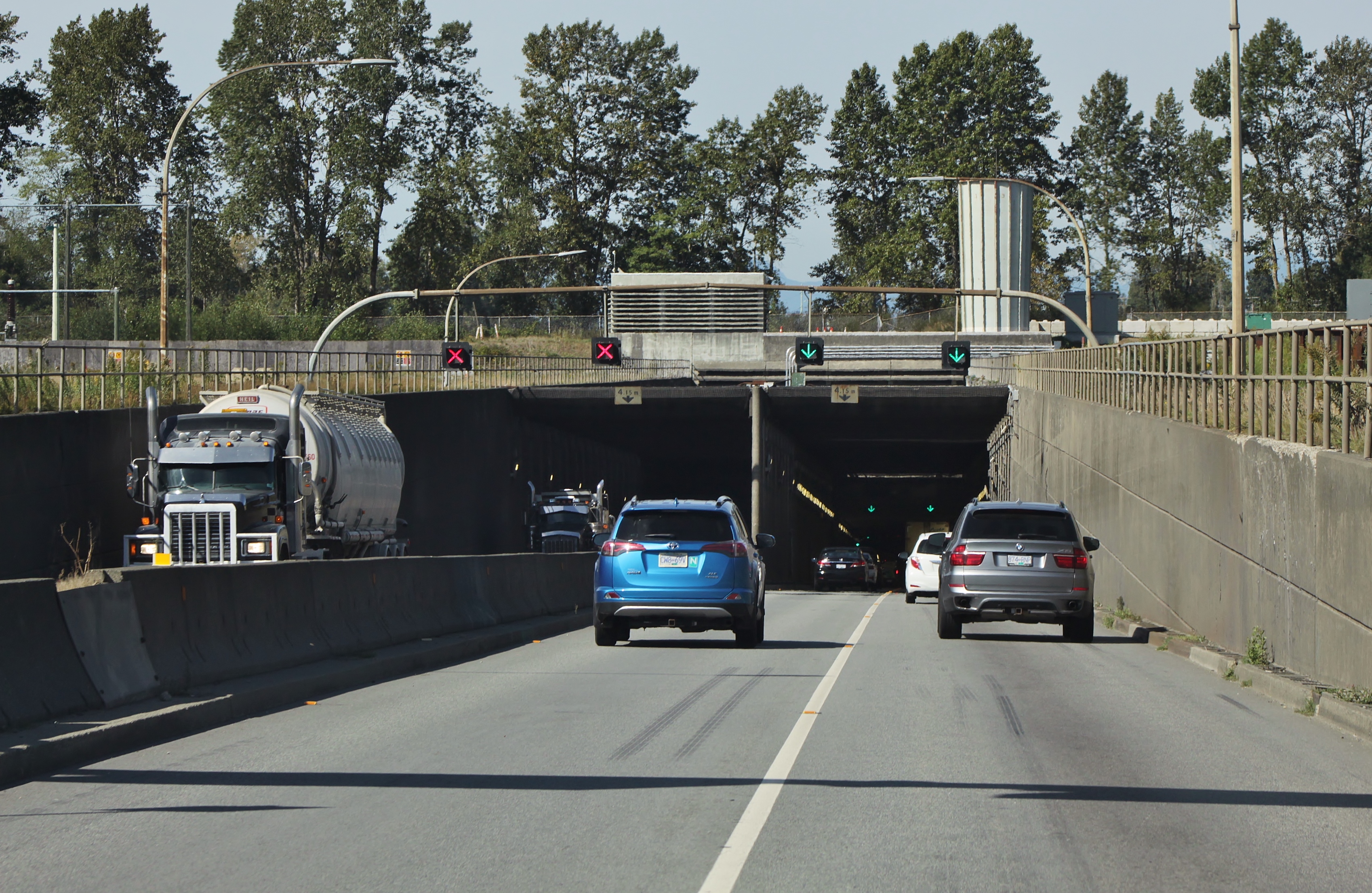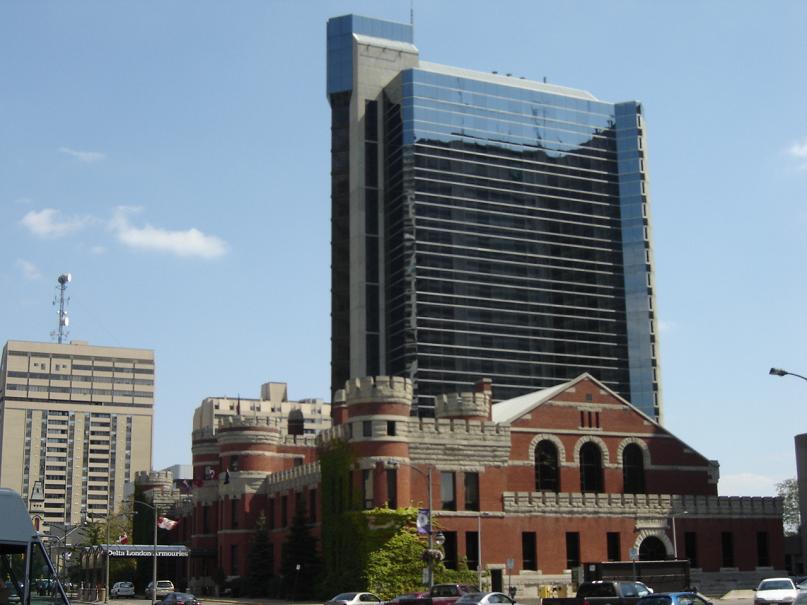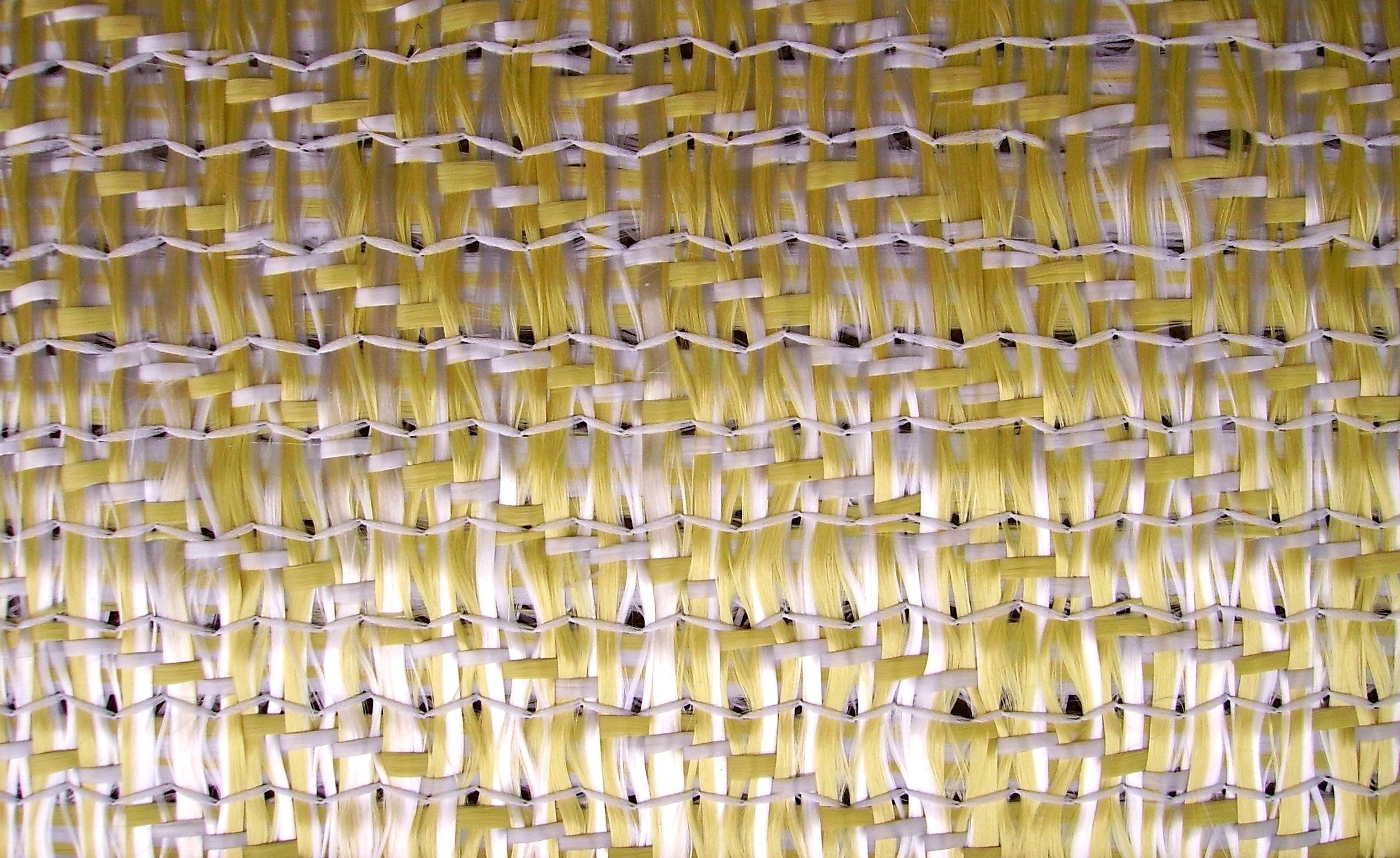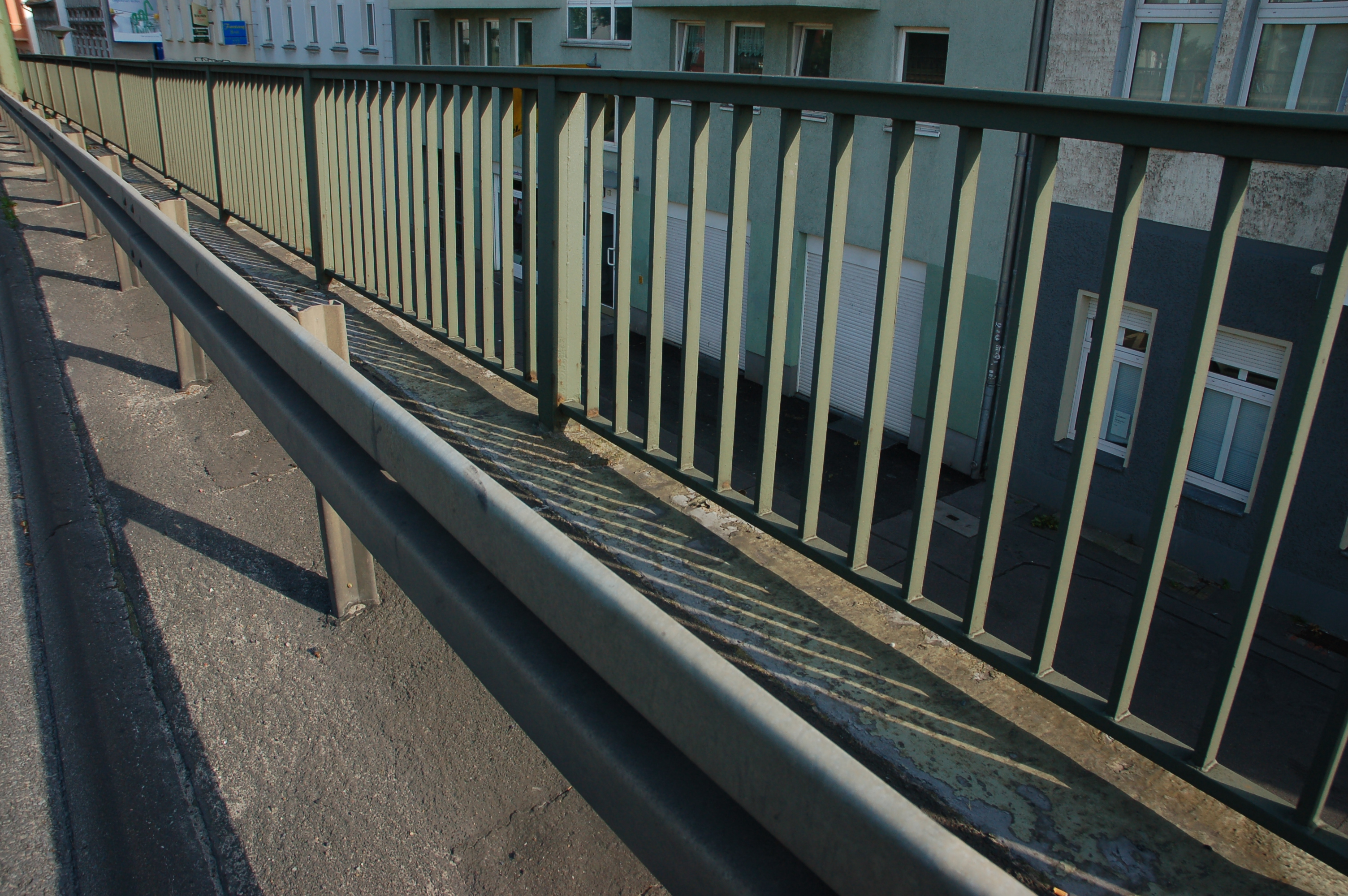|
Oak Street Bridge
The Oak Street Bridge is a crossing over the north arm of the Fraser River, the Canada Line, and several roads, in Metro Vancouver. History Infrastructure During the planning stage, it was known as the New Marpole Bridge, and steel plate girders salvaged from the second Granville Street Bridge made barges for constructing the foundations of the Oak St. Bridge. Opened in June 1957, the same date as the Moray Bridge, these links replaced the Marpole Bridge (road). The new configuration created a more circuitous route between Vancouver and Vancouver International Airport (YVR), not restored until the Arthur Laing Bridge opened in 1975. Initially, the highway ended at No. 4 Rd, short of connecting with No. 5 Rd. and the Ladner Ferry. A primary objective was to create a fast route to the U.S. border, partially realized on the 1959 opening of the Deas Tunnel, and fully with the 1962 opening of Highway 99 to the border. A branch connected to the new Tsawwassen ferry terminal. Vanco ... [...More Info...] [...Related Items...] OR: [Wikipedia] [Google] [Baidu] |
British Columbia Highway 99
Highway 99 is a provincial highway in British Columbia that serves Greater Vancouver and the Squamish–Lillooet corridor over a length of . It is a major north–south artery within Vancouver and connects the city to several suburbs as well as the U.S. border, where it continues south as Interstate 5. The central section of the route, also known as the Sea to Sky Highway, serves the communities of Squamish, Whistler, and Pemberton. Highway 99 continues through Lillooet and ends at a junction with Highway 97 near Cache Creek. The highway's number, assigned in 1940, was derived from former U.S. Route 99, the predecessor to Interstate 5 and a major route for the U.S. West Coast. Highway 99 originally comprised the King George Highway in Surrey, portions of Kingsway from New Westminster to Vancouver, and local streets. It was extended across the Lions Gate Bridge and to Horseshoe Bay in the 1950s along a new highway that would later be incorporated into Highway 1 (the ... [...More Info...] [...Related Items...] OR: [Wikipedia] [Google] [Baidu] |
Nehemiah George Massey
Nehemiah George Massey (September 5, 1903 – April 8, 1964) was a Canadian politician. He served in the Legislative Assembly of British Columbia from 1956 to 1960, as a Social Credit member for the constituency of Delta. Massey was born in Courtown near Gorey, County Wexford, Ireland and immigrated to Canada in 1922 to avoid threats by the Irish Republican Army. Massey lived in Regina and moved to Ladner, British Columbia in 1936. He worked at a logging camp, farm hand and mechanic. Honours The George Massey Tunnel The George Massey Tunnel (often referred to as the Massey Tunnel) is a highway traffic tunnel in the Metro Vancouver region of southwestern British Columbia. It is located approximately south of the city centre of Vancouver, British Columbia, ... was renamed in his honour. References Politicians from County Wexford Irish emigrants to Canada (before 1923) British Columbia Social Credit Party MLAs 1903 births 1964 deaths {{BritishColumbia-MLA ... [...More Info...] [...Related Items...] OR: [Wikipedia] [Google] [Baidu] |
Travelodge
Travelodge (formerly TraveLodge) refers to several hotel chains around the world. Current operations include: the United States, Canada, the United Kingdom, Spain, Ireland, New Zealand, Australia and several countries in Asia. However, many of these are operated by independent companies that have no connection with the brand in other countries. As of December 31, 2018, it has 435 properties with 31,005 rooms. United States The Travelodge brand was one of the first motel chains in the United States. Scott King, the Travelodge Corporation founder, was incorporated in Southern California in 1939. The first TraveLodge opened in San Diego in 1940. For many years, Travelodge was headquartered in El Cajon, California, east of San Diego. During its early years, TraveLodge emphasized itself as a budget motel chain that offered functional accommodations at rates lower than other chains. TraveLodge also emphasized that its motels were centrally located in or near downtown areas in order t ... [...More Info...] [...Related Items...] OR: [Wikipedia] [Google] [Baidu] |
Sandman Hotels
Sandman Hotel Group is a Canadian hotel chain owned by Northland Properties. With the corporate headquarters based in Vancouver, British Columbia, Canada, the company currently has 47 properties across Canada under the brands Sandman Inns, Sandman Hotel & Suites, and Sandman Signature Hotels & Resorts. Three Sandman Signature properties now operate in the UK based in Newcastle, Aberdeen and London Gatwick, alongside a stunning resort in Ireland; Portmarnock Hotel & Golf Links. In 1967, the first Sandman Inn opened in Smithers, British Columbia. The company rapidly expanded, opening at least one property every year. In 1976, a new tier of hotels was added to the company profile with Sandman Hotel Vancouver. In 2007, the Sandman Signature brand was added as a higher end brand. Tom Gaglardi is Chief Executive Officer for Sandman Hotel Group. [...More Info...] [...Related Items...] OR: [Wikipedia] [Google] [Baidu] |
Delta Hotels
Delta Hotels by Marriott is a four-star brand of hotels and resorts located primarily in North America. Canadian institution Beginnings In June 1962, William Pattison and his business partners opened the 68-room Delport Inn in Richmond, BC. That September, Western Hotels changed the location name to the Vancouver Airport Inn, and assumed the management until January 1964. During 1965–1967, Delta Developments built four motels on Vancouver Island, and leased/purchased two further motels in the BC interior. Driver Developments, which bought Delta Developments in 1969, experienced serious financial difficulties from its diverse investment portfolio within months. In 1970, Delta Hotels Limited assumed the ownership and operation of the hotels/motels. By mid 1974, the chain had been pruned to four properties. Beyond BC In 1975, Delta entered the Toronto market. By 1980, the six BC properties matched the six out of province. By 1985, there were four in BC, four in Ontario, and ... [...More Info...] [...Related Items...] OR: [Wikipedia] [Google] [Baidu] |
Motel
A motel, also known as a motor hotel, motor inn or motor lodge, is a hotel designed for motorists, usually having each room entered directly from the parking area for motor vehicles rather than through a central lobby. Entering dictionaries after World War II, the word ''motel'', coined as a portmanteau of "motor hotel", originates from the Milestone Mo-Tel of San Luis Obispo, California (now called the Motel Inn of San Luis Obispo), which was built in 1925. The term referred to a type of hotel consisting of a single building of connected rooms whose doors faced a parking lot and in some circumstances, a common area or a series of small cabins with common parking. Motels are often individually owned, though motel chains do exist. As large highway systems began to be developed in the 1920s, long-distance road journeys became more common, and the need for inexpensive, easily accessible overnight accommodation sites close to the main routes led to the growth of the motel conc ... [...More Info...] [...Related Items...] OR: [Wikipedia] [Google] [Baidu] |
Oak Street Bridge And Fraser River, Vancouver - Panoramio
An oak is a tree or shrub in the genus ''Quercus'' (; Latin "oak tree") of the beech family, Fagaceae. There are approximately 500 extant species of oaks. The common name "oak" also appears in the names of species in related genera, notably ''Lithocarpus'' (stone oaks), as well as in those of unrelated species such as ''Grevillea robusta'' (silky oaks) and the Casuarinaceae (she-oaks). The genus ''Quercus'' is native to the Northern Hemisphere, and includes deciduous and evergreen species extending from cool temperate to tropical latitudes in the Americas, Asia, Europe, and North Africa. North America has the largest number of oak species, with approximately 160 species in Mexico of which 109 are endemic and about 90 in the United States. The second greatest area of oak diversity is China, with approximately 100 species. Description Oaks have spirally arranged leaves, with lobate margins in many species; some have serrated leaves or entire leaves with smooth margins. Man ... [...More Info...] [...Related Items...] OR: [Wikipedia] [Google] [Baidu] |
Seismic Retrofit
Seismic retrofitting is the modification of existing structures to make them more resistant to seismic activity, ground motion, or soil failure due to earthquakes. With better understanding of seismic demand on structures and with our recent experiences with large earthquakes near urban centers, the need of seismic retrofitting is well acknowledged. Prior to the introduction of modern seismic codes in the late 1960s for developed countries (US, Japan etc.) and late 1970s for many other parts of the world (Turkey, China etc.), many structures were designed without adequate detailing and reinforcement for seismic protection. In view of the imminent problem, various research work has been carried out. State-of-the-art technical guidelines for seismic assessment, retrofit and rehabilitation have been published around the world – such as the ASCE-SEI 41 ... [...More Info...] [...Related Items...] OR: [Wikipedia] [Google] [Baidu] |
Fibre-reinforced Plastic
Fibre-reinforced plastic (FRP; also called fibre-reinforced polymer, or in American English ''fiber'') is a composite material made of a polymer matrix reinforced with fibres. The fibres are usually glass (in fibreglass), carbon (in carbon-fibre-reinforced polymer), aramid, or basalt. Rarely, other fibres such as paper, wood, or asbestos have been used. The polymer is usually an epoxy, vinyl ester, or polyester thermosetting plastic, though phenol formaldehyde resins are still in use. FRPs are commonly used in the aerospace, automotive, marine, and construction industries. They are commonly found in ballistic armour and cylinders for self-contained breathing apparatuses. Process definition A polymer is generally manufactured by step-growth polymerization or addition polymerization. When combined with various agents to enhance or in any way alter the material properties of polymers, the result is referred to as a plastic. Composite plastics refers to those types of plastic ... [...More Info...] [...Related Items...] OR: [Wikipedia] [Google] [Baidu] |
Soil Liquefaction
Soil liquefaction occurs when a cohesionless saturated or partially saturated soil substantially loses strength and stiffness in response to an applied stress such as shaking during an earthquake or other sudden change in stress condition, in which material that is ordinarily a solid behaves like a liquid. In soil mechanics, the term "liquefied" was first used by Allen Hazen in reference to the 1918 failure of the Calaveras Dam in California. He described the mechanism of flow liquefaction of the embankment dam as: The phenomenon is most often observed in saturated, loose (low density or uncompacted), sandy soils. This is because a loose sand has a tendency to compress when a load is applied. Dense sands, by contrast, tend to expand in volume or 'dilate'. If the soil is saturated by water, a condition that often exists when the soil is below the water table or sea level, then water fills the gaps between soil grains ('pore spaces'). In response to soil compressing, the po ... [...More Info...] [...Related Items...] OR: [Wikipedia] [Google] [Baidu] |
Cast In Place Concrete
Cast-in-place concrete or Cast-in-situ concrete is a technology of construction of buildings where walls and slabs of the buildings are cast at the site in formwork. This differs from precast concrete technology where slabs are cast elsewhere and then brought to the construction site and assembled. It uses concrete slabs for walls instead of bricks or wooden panels, and formwork is used for both walls and roof. Advantages of this technology are strength of the building, insulation, and versatility for different types of buildings. A disadvantage is the high amount of labor required to install and remove formwork. See also * Precast concrete * Formwork Formwork is Molding (process), molds into which concrete or similar materials are either precast concrete, precast or cast-in-place concrete, cast-in-place. In the context of concrete construction, the falsework supports the shuttering mold ... References Building engineering {{civil-engineering-stub ... [...More Info...] [...Related Items...] OR: [Wikipedia] [Google] [Baidu] |
Traffic Barrier
Traffic barriers (sometimes called Armco barriers,AK Steel (formerly Armco) genericized trademark also known in North America as guardrails or guard rails and in Britain as crash barriers) keep vehicles within their roadway and prevent them from colliding with dangerous obstacles such as boulders, sign supports, trees, bridge abutments, buildings, walls, and large storm drains, or from traversing steep (non-recoverable) slopes or entering deep water. They are also installed within medians of divided highways to prevent errant vehicles from entering the opposing carriageway of traffic and help to reduce head-on collisions. Some of these barriers, designed to be struck from either side, are called median barriers. Traffic barriers can also be used to protect vulnerable areas like school yards, pedestrian zones, and fuel tanks from errant vehicles. While barriers are normally designed to minimize injury to vehicle occupants, injuries do occur in collisions with traffic barriers. They ... [...More Info...] [...Related Items...] OR: [Wikipedia] [Google] [Baidu] |






